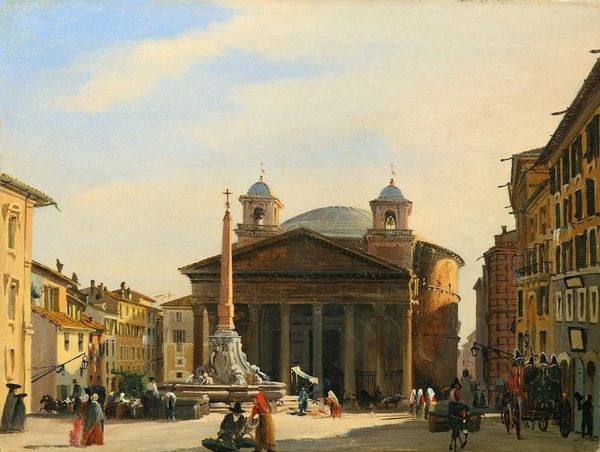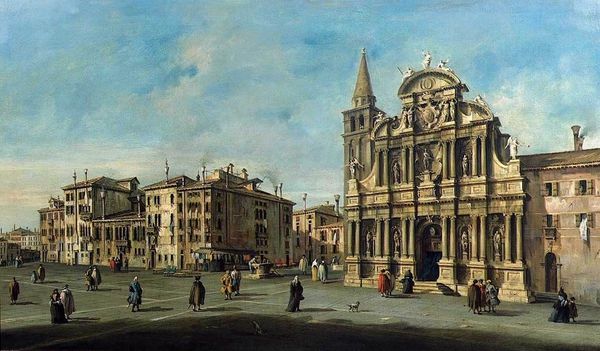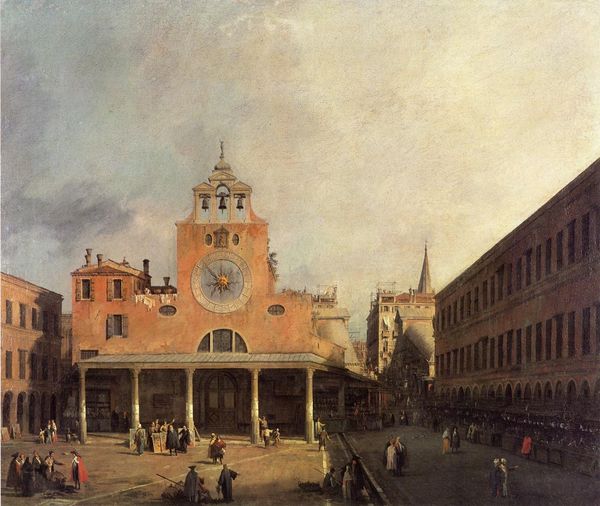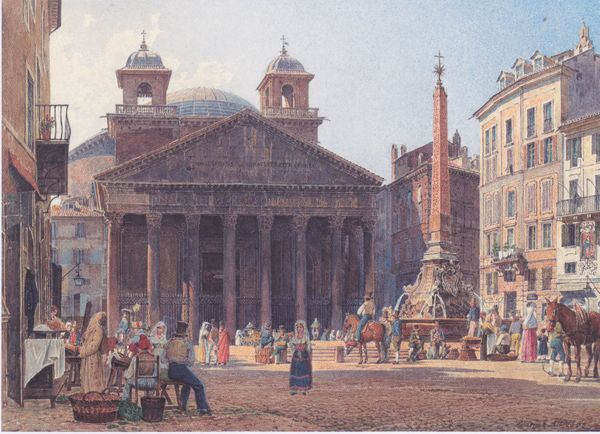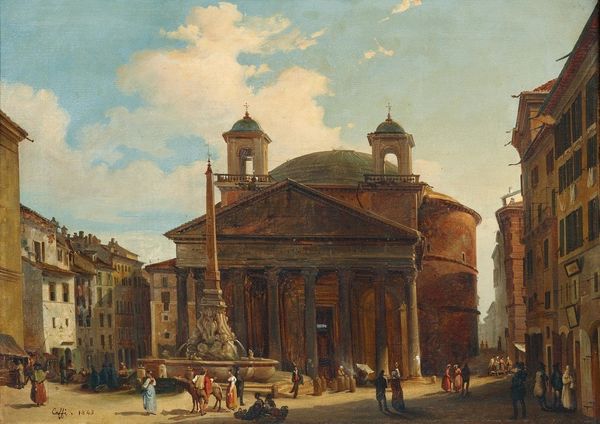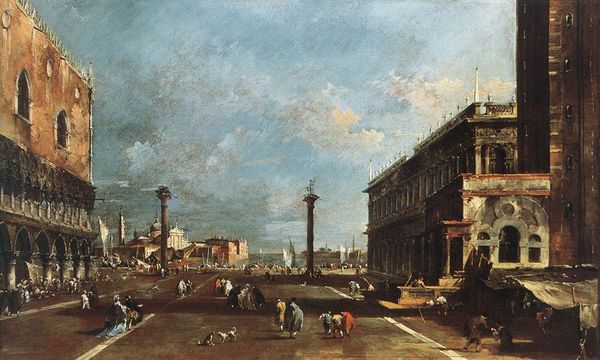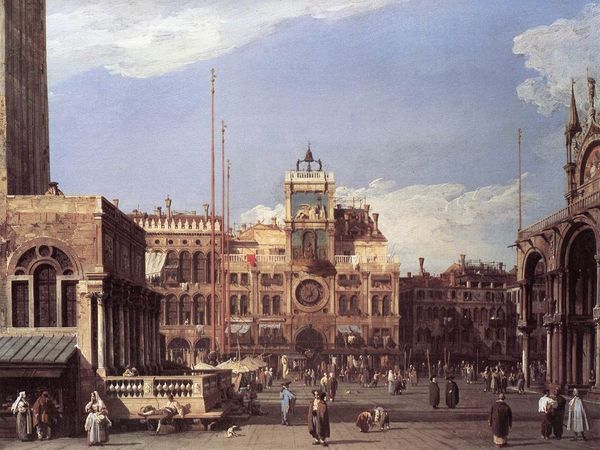
oil-paint
#
oil-paint
#
landscape
#
oil painting
#
romanticism
#
square
#
cityscape
#
genre-painting
#
academic-art
#
street
#
realism
#
building
Copyright: Public domain
Curator: This piece offers us a glimpse into the bustling life of a Roman square, caught on canvas by Fyodor Bronnikov. Editor: Immediately, I notice the energy – a whirlwind of figures and carriages centered on that monumental building in the backdrop. Is it the Pantheon? The scale feels awe-inspiring. Curator: Indeed, it's the Pantheon, rendered with a meticulous architectural precision typical of academic art, Bronnikov appears deeply invested in representing Roman daily life. His genre painting seamlessly melts with a romantic sense for historical environments, a rather interesting and perhaps unique blend. Editor: The interplay between the eternal Pantheon and the ephemeral daily activities really stands out. It’s that juxtaposition that grabs your attention—a symbol of power set against the ordinary affairs of the people. The street-level view lends itself to the painting’s almost journalistic qualities. I would wager, seeing a crowd of similar style paintings, Bronnikov took inspiration in what was considered in those days reportage art. Curator: It suggests a complex narrative, beyond mere visual documentation. He also painted, as we know, primarily biblical and historical paintings, yet how to interpret it now? Note the meticulous detailing – the clothing, the postures, the very textures of the stone are so deliberately conveyed. Editor: And what of the visual symbols embedded within this vista? For example, the obelisk, can be understood as an image from pagan culture—standing juxtaposed next to the Catholic elements atop the Pantheon, if my eyes do not betray me... it reads like a commentary. Curator: Perhaps a comment on the layered history of Rome itself – pagan roots intertwined with Christian structures and modern life. It feels that Bronnikov, more than commentary, tried to illustrate these palimpsests of faith, knowledge, commerce. Editor: What I find interesting is how he manages to capture movement despite the rigid academic style. You feel the clip-clop of hooves, the murmur of conversation. Curator: Ultimately, Bronnikov invites us to consider the public role of art, particularly its capacity to bridge historical grandeur with the pulse of everyday experience. Editor: A wonderful synthesis – historical record meeting romantic narrative. Thank you.
Comments
No comments
Be the first to comment and join the conversation on the ultimate creative platform.
